The 13 most underrated cities in the world
If you sneer at the idea of a holiday in Brussels, Dubai or Zurich, think again. There’s more to these places – and many others – than meets the eye.
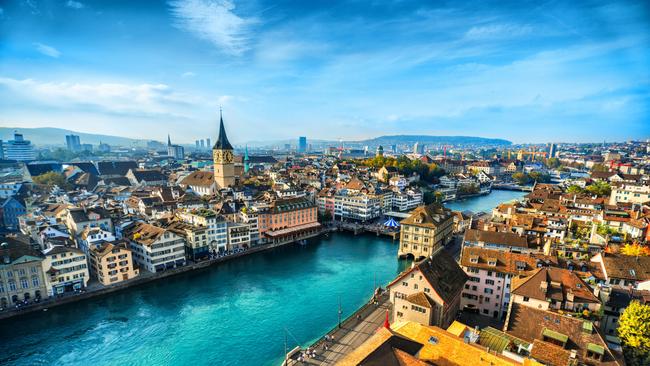
We all have our travel blind spots but we aren’t always correct in our preconceptions. What if that notoriously lurid city, risen from desert sands, actually deals in art and culture? What if that brash, flash gambling paradise in the American West has more than slot machines? What if that South American country, crammed full of narco-terrorists and guerillas in every film portrayal, is actually a Latin paradise alive with fine scenery and epic history?
The following 10 travel destinations have all been jeered, feared or sneered at by a broad selection of the travellers. But from Dubai to Vegas via Brussels, Toronto and the Dominican Republic, all deserve closer appraisal by those who have long waved them away. You never know, your next holiday could be somewhere you always swore you hated.
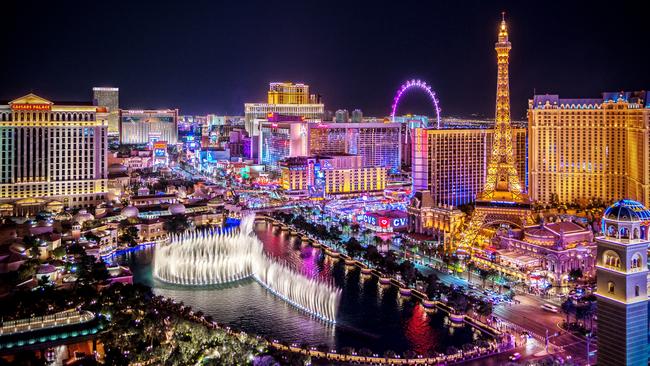
Las Vegas, US
The perception: Money-grabbing casino maze where livelihoods are lost in windowless rooms. Unrepentant party zone where The Hangover-style stag parties roam the corridors.
The reality: While the idea that Las Vegas has fully reinvented itself from lecherous bad boy to tea-quaffing saint has been rather overplayed (you can still misplace both your fortune and your moral compass in one of its five-star temples), the US’s most notorious city is a much more rounded destination than it was even 20 years ago. There are attractions that genuinely tick the “family-friendly” box (such as the Discovery Children’s Museum, and the Shark Reef Aquarium at Mandalay Bay). Sphere, which opened in September, is surely the planet’s most innovative entertainment venue; a world of LED screens and wraparound sound. And there are first-rate restaurants at almost every turn, including the sumptuous Chinese fare of Wing Lei at Wynn and the French finesse of L’Atelier de Joel Robuchon at the MGM Grand.

Brisbane, Australia
The perception: Oversized country town full of red necks and lacking culture.
The reality: It’s usually southern states residents who sneer at Brisvegas, and they generally haven’t set foot there for more than a decade. Well listen up because things changed a long time ago. Even The New York Times included Brissie in its list of 52 places to go in 2024 (at No. 39), giving it a shout-out for the “food, art and vertiginous views in a city gearing up for its Olympic moment”. Head to Howard Smith Wharves, in the shadow of the storied Story Bridge, for a cold one at Felons Brewing or martini at Mr Percival’s, followed by a flame-grilled feast at Agnes in nearby Fortitude Valley. The Queen’s Wharf development, to open later this year, will up the hotel ante with a Star Grand, Rosewood and Dorsett properties. Culture is abundant at the Performing Arts Centre and adjacent art galleries. You’ll find lacy architecture in Paddington and Graceville and jaw-dropping views at Mt Cooth-tha.
PENNY HUNTER
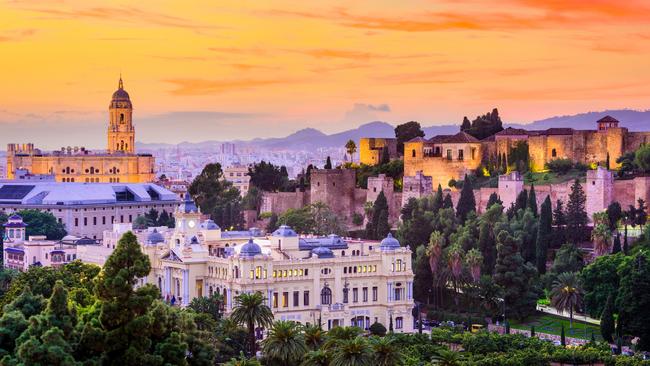
Malaga, Spain
The perception: A tacky and meritless gateway to the Costa Del Sol, only briefly glimpsed by lobster-red tourists as they speed to the sunbeds of Fuengirola and Marbella.
The reality: Put simply, this is one of Spain’s greatest cities. Never mind its location within one of Europe’s cheaply cheerful package-holiday hotspots, Malaga is a serious rival to Madrid, Barcelona and Valencia when it comes to culture and cuisine. The Alcazaba rises on its hilltop as one of the finest remnants of Moorish rule in Andalusia; not quite as majestic as Granada’s Alhambra, but not far off. The cathedral is a Renaissance spectacle with a soaring bell-tower that gives Seville a run for its euros. The Mercado Central de Atarazanas (Shipyard Market) is awash with fresh foodstuffs. The Museo Picasso offers a wealth of works by the city’s most fabled Cubist son. And if you cannot find something to buy on the pedestrianised drag of Calle Marques de Larios, you must be one of the world’s pickiest shoppers. That all of this is served up under flawlessly blue skies only adds to the charm.
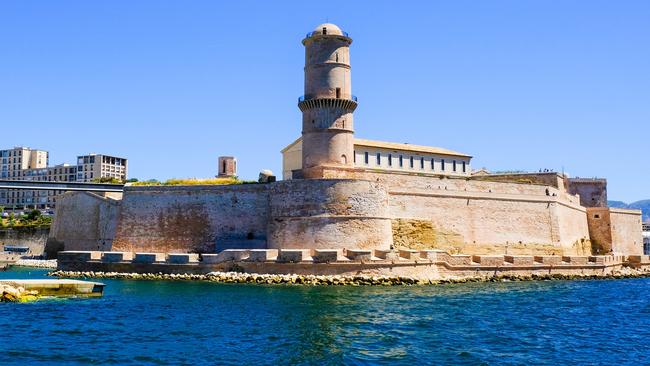
Marseille, France
The perception: Grimy, scary city on the otherwise pristine canvas of southern France.
The reality: Marseille divides opinion. It always has. When Louis XIV had Fort Saint-Jean – the fortress that guards the entrance to the harbour – built in the 1660s, he insisted that its cannons were pointed inland, at the rebellious locals, rather than out to sea, at possible enemies. In some ways, little has changed. If you do not know Marseille, you may be wary of it; a metropolis that looms large in headlines about crime rates and riots. But spend a weekend in its company, and France’s second biggest city transcends its reputation. There are excellent restaurants on the Vieux-Port; stay-all-evening eateries where the bouillabaisse is formidable. There are museums aplenty: the Museum of European and Mediterranean Civilisations, which now fills out the fortress; art exhibitions amid the cloisters of the Centre de la Vieille Charite. And hilltop basilica Notre Dame de la Garde is arguably more beautiful than its Paris namesake. Better still, the Mediterranean gleams on the doorstep, in the limestone inlets of the Calanques – now a national park.
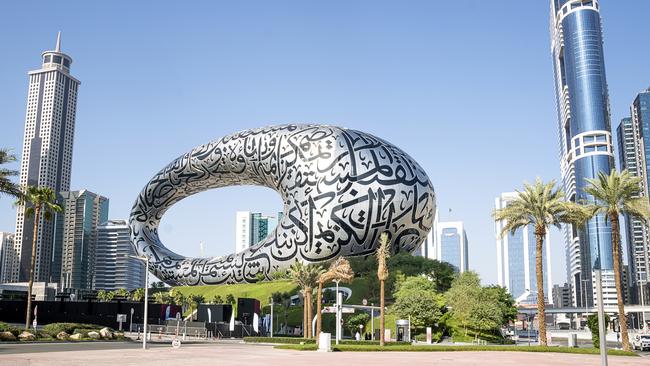
Dubai, UAE
The perception: One enormous overpriced beach resort, filled with gurning influencers.
The reality: Alas, the influencers part is accurate. Spend a few days in the glitziest of the seven (United Arab) Emirates, and you are guaranteed to spot a chorus line of glamorous twentysomethings pouting into their phones. But the suggestion that Dubai is a cultural desert every bit as arid as the actual desert that swells out behind it is misplaced. The Museum of the Future looks as it sounds, gazing into tomorrow from a metallic ring-like structure as innovative as the exhibits within. The Pearl Museum looks back to the area’s original way of making a living. And if this doesn’t feel enough of an enticement, there is always the view from the observatory of the Burj Khalifa, the skyscraper that ranks as the world’s tallest building.
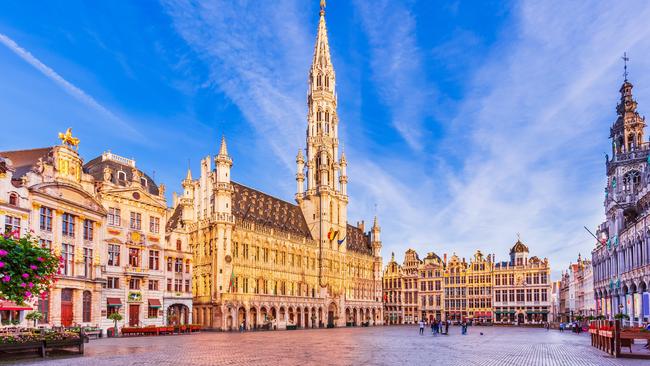
Brussels, Belgium
The perception: Dull kernel of bureaucracy; the heartbeat of the EU. Booooooooooring.
The reality: The European Union was founded, in its modern form, in 1992. The city most closely associated with it first dotted the map of northwestern Europe more than a millennium earlier, in AD 979. In other words, there is a great deal more to Brussels than the political institutions within it. The Grand-Place is one of the continent’s foremost urban squares, its cobbles framed by elegant Baroque guildhalls. The Royal Museums of Fine Arts rival the Louvre in a collection featuring Van Dyck, Van Gogh, Matisse, Rubens and Rembrandt. And this being Belgium, you are never far from a beer. The city’s eulogised Cantillon brewery is open for tours on Saturdays.

Zurich, Switzerland
The perception: Tedious temple to financial services that no Alpine horizon can enliven.
The reality: In one sense, admittedly, the perception is correct. Switzerland’s biggest city is a major hub for the banking and insurance industries, home to the Swiss Stock Exchange. But there is much more to its outlook than grey suits and flow charts. It is a remarkably good-looking place, spreading out at the northerly tip of the lake of the same name. That glacier-born waterway acts as a mirror, recasting the parks and pleasure gardens along its edge – the Rentenwiese, Belvoirpark – in reflection. And there are major museums beyond the shoreline: the Asian and African art of the Museum Rietberg; the modern sculptures and installations of Kunsthaus Zurich; and the football trophies and trinkets of the FIFA Museum. You can eat well too. And if you have a hankering for classic Swiss fare, the breaded veal steaks and cheese fondues of the Chuchi restaurant at the Hotel Adler should squarely hit the spot.
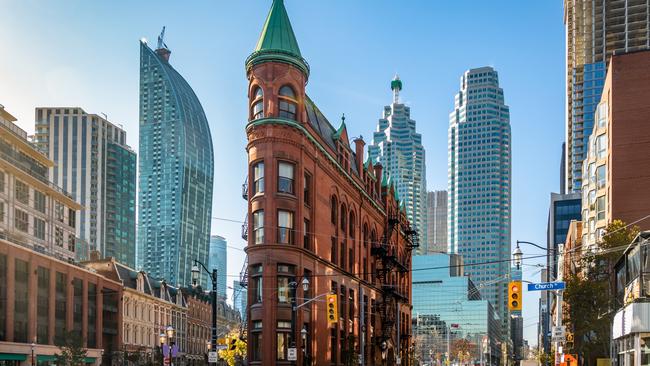
Toronto, Canada
The perception: Canada’s, and North America’s, dullest city. Brussels with skyscrapers.
The reality: It is difficult to pinpoint the source of Toronto’s reputation for being a little on the drab side. Maybe it is the weather (it can certainly be chilly outside the summer); perhaps the fact that, for all its tall buildings, it does not have the swagger of New York. But then, where does? And if we are to avoid every city that lacks the flair of the Big Apple, we will be left with a very short travel list. Besides, at ground level, Canada’s biggest city is hardly a dullard. Key avenue Queen Street West is thronged with cafes, restaurants and, in the case of the well-named Graffiti Alley, extravagant swirls of urban art. Kensington Market is alive with food stalls and second-hand stores. And the Art Gallery of Ontario is stuffed with bright treasures, including inspiring works by the Torontonian Group of Seven landscape painters of the 1920s. The same buzz applies at a more elevated level too. The CN Tower is taller than anything New York has to offer and serves up a splendid view of a Great Lake (Ontario) to boot.

Colombia
The perception: South American hellhole where you are as likely to be kidnapped as have an enjoyable holiday, and where every other person you meet is part of the drugs trade.
The reality: It is 30 years since Pablo Escobar died and 20 since Colombia began to emerge from the fug of civil war and narco-terrorism that engulfed it in the second half of the last century. While the country at South America’s northwest corner is not without its issues, it is a safe destination for holidays. This includes Cartagena – as splendid a Caribbean city as you can imagine, its waterline still monitored by the 16th century Castillo San Felipe de Barajas. It includes Bogota, the capital, where life swirls in the restaurants of La Candelaria, and on the pathways of urban mountain Monserrate. And it includes San Agustin Archaeological Park, a historical jewel where stone-carved “tomb guardians”, planted into a hillside near Neiva (in the Huila department), sing of a civilisation that thrived before the Spanish conquest.

Sarajevo, Bosnia
The perception: War-torn Balkan ruin that was wiped from the map in the mid-1990s.
The reality: It is true that the Bosnian capital suffered deeply during the disintegration of Yugoslavia; the siege it endured between 1992 and 1996 was one of the worst cases of inhumanity on European soil in a 20th century littered with the atrocities. But it has emerged in the 21st as a fascinating city. Yes, you can still see the scars of the civil war, but you can spot other eras too – the Ottoman centuries in the restaurants, minarets and souk-streets of its Bascarsija district; the modern day-to-day in the stalls of Markale Market; a splendid view of it all from the Trebevic Cable Car. Moreover, the mountains that once bristled with enemy weapons have returned to their greatest purpose – in the first-rate ski resorts of Bjelasnica and Jahorina.

The Dominican Republic
The perception: The cheapest Caribbean destination feasible; fair risk of food poisoning.
The reality: In some ways, it is baffling that the Dominican Republic is not more revered as a holiday option. The island it shares with Haiti (Hispaniola) is only eclipsed in the Caribbean size table by Cuba – and it comes with as much history and geography as that very next-door neighbour. Founded in 1496, the Dominican capital Santo Domingo is older than Havana (1514) and shows its heritage in its UNESCO World Heritage-listed Ciudad Colonial neighbourhood, home to the first cathedral in the Americas (Santa Maria la Menor). The country’s interior deals in mountains, waterfalls and forests just as ably as Cuba’s serves up the Sierra Maestra – not least in Los Haitises National Park. One of the problems is that the reputation of the “Dom Rep” has long been defined by the basic nature of the resorts that sprang up on its shores in the 1980s. Happily, the current century has seen plenty of superior openings.

Mumbai, India
The perception: The former Bombay is an over-crowded, dangerous megapolis where tourists are besieged by beggars and touts.
The reality: There’s no downplaying the fact that 21.6 million people are packed into its metro area and the Dharavi slum is home to an estimated 100,000 jammed across less than 3sq km. But of all India’s massive cities, Mumbai most richly rewards adventurous souls. There are the ever-present exotic trappings of Bollywood and guaranteed star sightings at top clubs and bars. At the vast Azad Maidan field (formerly Bombay Gymkhana), there’s cricket practice seemingly around the clock as scouts watch on, hoping to spot the next Sachin Tendulkar. Mumbai Dream Tours offers Bollywood studio tours plus a guided three-hour Heritage Trail experience that covers the high court, retro cinemas, cathedrals and UNESCO-listed Chhatrapati Shivaji Station, the largest in India and due for further restoration this year. The Taj Mahal Palace is the stand-out place to stay but it’s very touristy; consider calling in to take tiffin or tuck into a multi-course tandoor oven feast at its Masala Kraft diner, but bed down somewhere more neighbourhood-focused, such as Abode Bombay in Colaba; its 25 guestrooms are filled with antiques, original artworks and quirky charm.
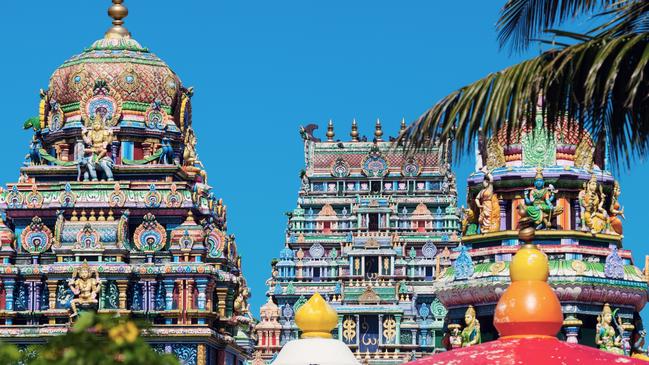
Nadi, Fiji
The perception: An airport, a gateway, a place to pass through and head out to the islands.
The reality: Nadi town is a local precinct that would never rank as any tourist’s No. 1 attraction in Fiji but the nation is much more than just a necklace of island resorts. There may be few compelling reasons to base a holiday here but even a half-day excursion reveals elements of the tri-cultural mix, including a visit to the vividly coloured Sri Siva Subramaniya Swami Hindu temple. Indian, Chinese and ethnic Fijian shops sell products from their communities along Queen’s Road and backstreets that radiate either side and there’s a swag of inexpensive eateries. Go for the crab curry at Tata’s and wontons at Small Plates Garden. Jack’s of Fiji is a one-stop store for all manner of things you never knew existed, let alone needed. My husband makes a beeline each visit for Jack’s “cotton spandex” Bermuda shorts with super-deep hip pockets. I’m addicted to Totoka Organics’ “wrinkle-reducing” dilo oil. For accommodation before hopping a boat to the islands, Port Denarau is the prime choice; Sofitel, Hilton, Radisson and Sheraton are represented. Head to the well-organised marina for boutiques, cafes and top-class Indian/Asian fare at Indigo.
SUSAN KUROSAWA
TELEGRAPH MEDIA GROUP
WITH ADDITIONAL REPORTING BY SUSAN KUROSAWA AND PENNY HUNTER

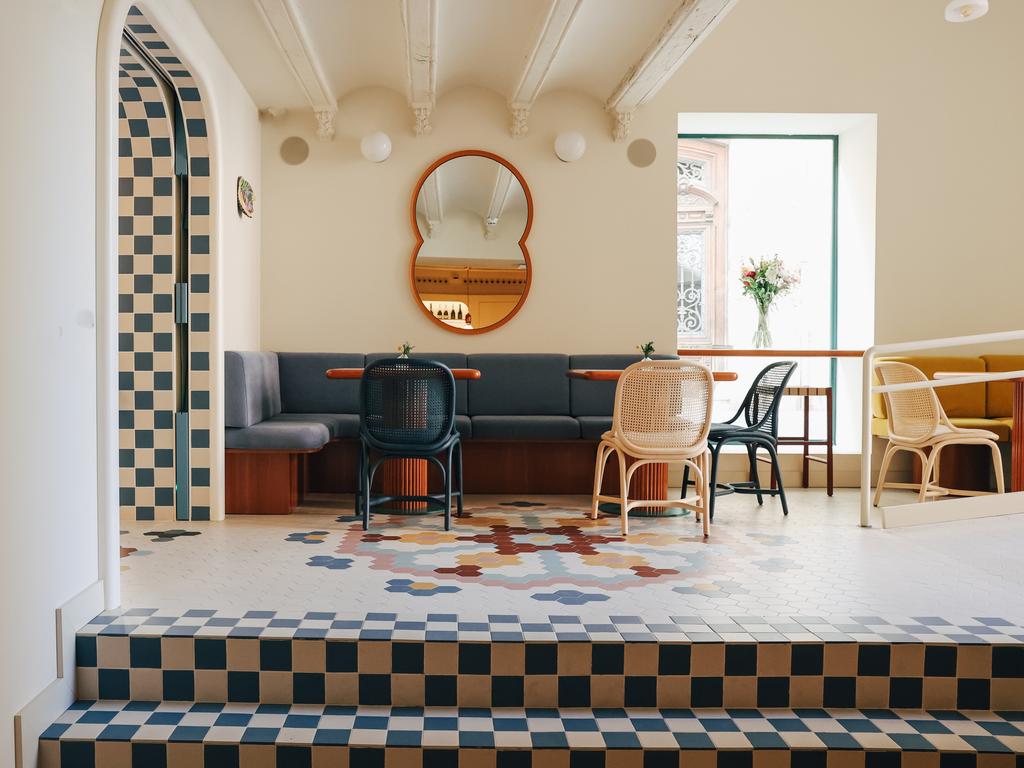


To join the conversation, please log in. Don't have an account? Register
Join the conversation, you are commenting as Logout